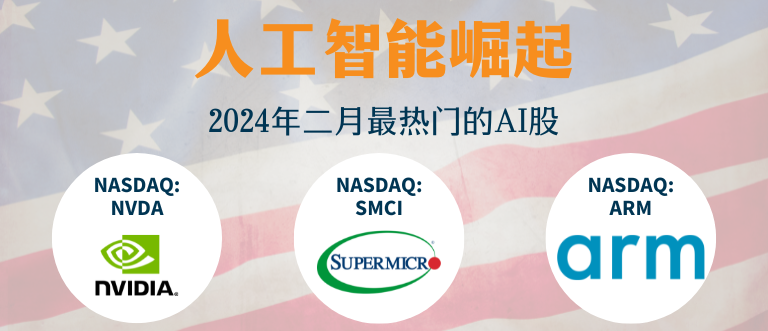Companion tranche
Table of Contents
Companion tranche
Within the complex world of finance, with plenty of investment alternatives, the companion tranche is one unique and subtle part of the mortgage-backed securities market. With its distinct risk-return profile, this specialised tranche deepens and complicates the world of structured finance. By exploring the complexities of companion tranches, we uncover a financial tool that straddles the line between risk management and innovation, providing an intriguing look at the workings of contemporary financial markets.
What is a companion tranche?
A companion tranche is a type of tranche in a collateralised mortgage obligation (CMO) that has a specified relationship with another tranche, known as the “support” tranche. Interest and principal payments are only made to the companion tranche upon the retirement of the support tranche.
As losses from mortgage defaults or prepayments predominantly impact the support tranche, this arrangement offers some protection to investors in the companion tranche. Also, as payment distributions in companion tranches are sequential, investors usually aim for larger yields at the expense of more risk. The mortgage-backed securities complex offers customised risk exposure and return possibilities thanks to its tranche structure.
Understanding companion tranche
A unique part of a collateralised mortgage obligation (CMO) that adds a layer of return and risk to the overall structure is called a companion tranche. The companion tranche is designed to receive interest and principal payments following the satisfaction of other tranches within the CMO, positioning it to absorb prepayment and extension risk. Its profitability is closely linked to the underlying mortgage pool’s prepayment patterns. Due to the uncertainty surrounding borrower prepayment rates, investors in companion tranches may encounter greater cash flow unpredictability than in other tranches.
Companion tranches, which are known for their higher yields, are preferred by investors who are prepared to assume more risk in exchange for the possibility of more significant returns. As such, they are a wise choice for individuals who have a sophisticated understanding of mortgage-backed securities and a risk tolerance.
Working of a companion tranche
A companion tranche is designed to withstand fluctuations in interest rates. It is the first tranche to experience prepayment losses and the last to receive principal payments. Prepayments decrease when interest rates climb, extending the average life of the companion tranche and shielding it from early payoffs.
During dropping interest rates, prepayments quicken, shortening the tranche’s average life. While delivering potentially greater yields, companion tranches are riskier due to their susceptibility to interest rate swings, making them ideal for educated investors with a strong understanding of the intricate dynamics underlying mortgage-backed securities.
Role of companion tranche
Companion tranches, which are frequently included in collateralised mortgage obligations (CMOs), are essential for investors’ risk and return structuring. Companion tranches are designed to insulate against fluctuating prepayment rates. They are positioned in between the scheduled and support amortisation classes. They take on greater risk during periods of heavy prepayments, shielding other tranches. When prepayments are slower, investors are less exposed and can earn higher interest rates.
Companion tranches are an excellent option for investors looking to balance risk and return in the complicated world of mortgage-backed securities because of their dynamic risk-sharing feature, which also gives them some flexibility and adaptability to shifting market conditions.
Example of Companion Tranche
An Interest-Only (IO) tranche is a typical example of a companion tranche. An IO tranche of a mortgage-backed asset only gets interest payments from the mortgage loans that underpin it, offering investors the chance to earn greater returns. But other tranches, such as the principal-only (PO) tranche, are the recipients of the principal payments. As a result, the IO tranche complements the PO tranche by providing a distinct risk-return profile inside the same MBS structure.
Frequently Asked Questions
Whether a companion tranche is right depends on your investing goals and risk tolerance. As companion tranches are more vulnerable to fluctuations in interest rates, they carry a higher risk and a more significant potential return. A financial advisor can determine if this sophisticated mortgage-backed product fits your investing philosophy and risk tolerance.
Risk-tolerant investors are drawn to equity tranches because they present more enormous profits at a higher risk. They serve as a safety net for senior tranches by taking on losses first. For investors looking for more consistent returns, companion tranches offer steady cash flow at a lower risk. When combined, they let investors customise their risk-return profiles.
A collateralized mortgage obligation (CMO) consists of companion tranches and equity tranches. Equity tranches are the riskiest since they have a bigger potential return but absorb losses first. On the other hand, companion tranches are designed to absorb excessive interest and provide a safety net for the principal repayment plan. They are safer than equity tranches and provide a more consistent dividend source. Together, the two tranches provide a diverse investment package; companion tranches offer a more stable income flow, while equity tranches assume higher risk to earn more significant returns.
Before purchasing companion tranches or equity in mortgage-backed securities, consider variables like prepayment risk, economic conditions, and changes in interest rates. Understanding the possible risks and returns connected to these intricate financial instruments requires evaluating the credit quality of the underlying mortgages, the structure of the tranches, and the general state of the market.
Collateralised Mortgage Obligations consist of companion tranches and equity tranches (CMOs). Since equity tranches are the last to receive cash flows, successful investments carry a higher risk and potentially higher reward. Companion tranches are designed to insulate against prepayment risk and give a modest risk and return. Until the other tranches are paid in full, these tranches only get interest payments. Thus, a thorough awareness of risk tolerance, market dynamics, and the particulars of the underlying assets is necessary for successful investing in these tranches
Related Terms
- Notional amount
- Negative convexity
- Jumbo pools
- Inverse floater
- Forward Swap
- Underwriting risk
- Reinvestment risk
- Final Maturity Date
- Bullet Bonds
- Constant prepayment rate
- Covenants
- Savings bond calculator
- Variable-Interest Bonds
- Warrant Bonds
- Eurobonds
- Notional amount
- Negative convexity
- Jumbo pools
- Inverse floater
- Forward Swap
- Underwriting risk
- Reinvestment risk
- Final Maturity Date
- Bullet Bonds
- Constant prepayment rate
- Covenants
- Savings bond calculator
- Variable-Interest Bonds
- Warrant Bonds
- Eurobonds
- Emerging Market Bonds
- Serial bonds
- Equivalent Taxable Yield
- Equivalent Bond Yield
- Performance bond
- Death-Backed Bonds
- Joint bond
- Obligation bond
- Bond year
- Overhanging bonds
- Bond swap
- Concession bonds
- Adjustable-rate mortgage
- Bondholder
- Yen bond
- Liberty bonds
- Premium bond
- Gold bond
- Reset bonds
- Refunded bond
- Additional bonds test
- Corporate bonds
- Coupon payments
- Authority bond
- Clean price
- Secured bonds
- Revenue bonds
- Perpetual bonds
- Municipal bonds
- Quote-Driven Market
- Debenture
- Fixed-rate bond
- Zero-coupon bond
- Convexity
- Compounding
- Parallel bonds
- Junk bonds
- Green bonds
- Average maturity
- Investment grade bonds
- Convertible Bonds
Most Popular Terms
Other Terms
- Options expiry
- Adjusted distributed income
- International securities exchanges
- Settlement currency
- Federal funds rate
- Active Tranche
- Convertible Securities
- Synthetic ETF
- Physical ETF
- Initial Public Offering
- Buyback
- Secondary Sharing
- Bookrunner
- Payment Date
- Secondary Market
- Margin Requirement
- Mark-to-market
- Pledged Asset
- Yield Pickup
- Subordinated Debt
- Trailing Stops
- Treasury Stock Method
- Stochastic Oscillator
- Basket Trade
- Contrarian Strategy
- Exchange Control
- Notional Value
- Relevant Cost
- Dow Theory
- Speculation
- Stub
- Trading Volume
- Going Long
- Pink sheet stocks
- Rand cost averaging
- Sustainable investment
- Stop-limit sell order
- Economic Bubble
- Ask Price
- Stock symbol
- Synthetic replication
- Bourse
- Beneficiary
- Witching Hour
- Widow and Orphan stock
- Public Float
- Closing Price
- Reverse stock splits
- Quiet period
- Prepayment risk
Know More about
Tools/Educational Resources
Markets Offered by POEMS
Read the Latest Market Journal

本文旨在为中级外汇交易者提供必要的信息和知识。它将涵盖我们上一篇文章 “五分钟看懂世界上最活跃的市场-外汇差价合约(FX CFD)...

解锁台湾股市的投资潜力!深入了解由强大的技术驱动型经济推动的股票市场,2023 年机械和电气设备将占出口的 69%。在政治稳定、投资者友好的法规和健全的法律框架下,探索台积电和富士康等全球顶级企业。台湾股市值得称赞的历史表现和在国际贸易中的的重要性使其更具吸引力。在这个科技实力雄厚、经济稳定、充满活力的股票市场中,抓住增长机遇!

了解外汇市场 外汇交易市场又称外汇市场,是一个买卖货币的全球性金融市场。它是全世界规模最大、流动性最强的金融市场,每日交易量超过 6 万亿美元。但外汇市场有一个重要却常被忽视的一点,就是它受交易心理的影响。在本文中,我们将探讨外汇市场的复杂性,还有把重点放在交易心理与传统交易策略共同发挥的关键作用...

五分钟看懂世界上最活跃的市场 -外汇差价合约(FX CFD)
外汇交易市场俗称外汇或外汇市场,是全球金融市场的支柱。它是世界上最活跃的市场,2022 年 4 月,全球交易额达到创纪录的每天 7.5 万亿美元[1] 。这个活跃的市场为交易者提供了利用货币价格波动赚取利润的机会。在本文中,我们将解释外汇市场的基本原理,助您了解其投资机制。 什么是外汇? 外汇市场是一个分散的全球市场,世界上所有货币都在这里进行交易...

随着通胀数据趋向 2% 的理想目标,人们普遍乐观地认为,在任何可能的降息之前,市场都不会受到不利影响。以下是美股市场2024年的一些重要事件,投资者在做出投资决策时可以参考留意。

根据《东南亚态势报告:2023》,失业和经济衰退是当前东南亚面临的主要挑战。各国采取了各种政策和措施以恢复经济,尽力摆脱新冠疫情的影响。尽管如此,越南在经济和社会方面展现出了令人满意的复苏迹象,经济增长逐季上升,成为世界经济的亮点之一。虽然全年GDP增速放缓至5.05%,低于政府6.5%的目标,但越南仍然是地区和世界经济增速较快的国家之一。






















